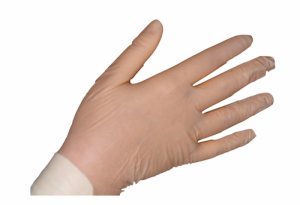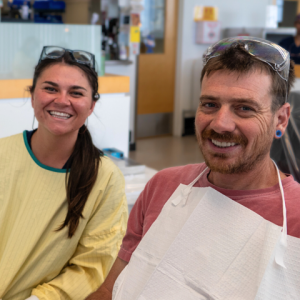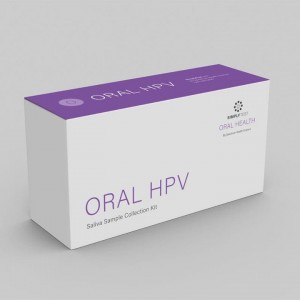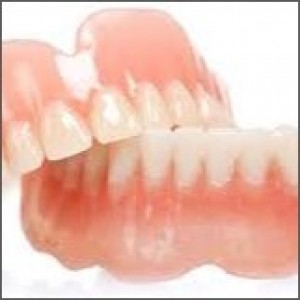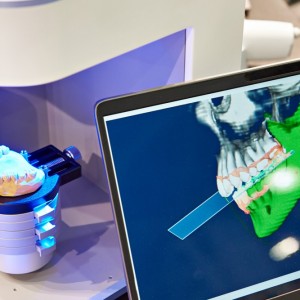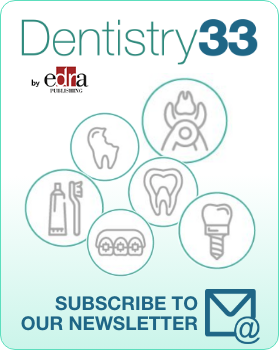
Dental materials: allergies, reactions
Lara Figini
The oral reactions to dental materials have been known for many decades, but the methods to identify and eliminate them are still predominantly empirical, based on the operator's eye and experience. Sometimes they look like inflammatory mucosa reactions, other times like oral lichenoid ulcerations, which in rare cases may predispose to the risk of oral cancer.
Understanding the role of materials in oral mucosal disease is important for dental team members involved in material selection for use in the clinical setting.
Materials and methods
In a literature review, the authors reviewed current knowledge about reactions to common dental materials, including the role of patch testing and material substitution in managing clinical issues. In this article, the term "allergy" has been chosen when discussing dental materials, as this is the term most understood by patients. In most situations, however, the term "allergy" will equate to a hypersensitivity type 4.
Results
Most allergic reactions in a dental environment occur among dental and auxiliary staff and involve contact dermatitis with materials such as latex or reactions to non-dental materials such as disinfectant products. Skin reactions are often hypersensitivity type 4, while most oral reactions are lichenoid. The results of this review establish that:
- Very few patients have true allergic reactions to dental materials and the immune lichenoid form is the most observed reaction. Most of these are asymptomatic or low symptom contact reactions with amalgam restorations.
- Where there is a gingival contact reaction around a ceramic crown or bridge, it is highly likely that the metal is responsible, provided hygiene concerns have been eliminated.
- Composite resins rarely cause lichenoid reactions.
- If you suspect an allergy to dentures, it is most often linked to the unbound methyl methacrylate monomer.
- Reactions to all dental materials are extremely rare in children.
- Materials with a high nickel content, such as stainless steel in crowns, rarely cause an oral reaction, although skin reactions are well-known.
- Isolated cases of allergy to alginate and polysulphide impression materials have been highlighted, and no contraindications to their use are indicated in the literature.
Case Management
In patients with asymptomatic oral lichenoid amalgam reaction, the first step is to identify and record the location of the lesion and the type of restoration in contact with the injured mucosal area. Photograph the area to demonstrate the size of the reaction and contact with the restoration, propose and remove the investigated restoration.
If the patient chooses to keep the restoration rather than replace it, the dental team should monitor the patient regularly for any tissue changes that could indicate a malignant transformation. If the lesion around the tooth and unreplaced restoration becomes larger and symptomatic, encourage the patient to replace the restoration as a matter of urgency.
If the patient chooses to replace the restoration, proceed with this treatment and observe the lesion.
Regression can take up to six months. If the area around the restoration develops worrying features suggesting dysplasia, take a picture and send it to your oral specialist immediately for evaluation.
When faced with a gingival contact reaction around a crown or bridge the main decision is whether to accept the situation, replace the prosthesis, or remove the teeth if they are of short-term prognosis.
When faced with a contact reaction to a composite, it should be treated like those from amalgam and in case of replacement, a material such as glass ionomer should be considered.
If a denture allergy is suspected, have the patient remove the dentures for a few days. If the erythema under the denture does not resolve, and there is no occlusal overload there, consider some other mucosal disease, photograph it and refer the patient to an oral specialist.
Conclusions
From the data of this review, it can be concluded that most allergic reactions in a dental environment occur among dental and auxiliary staff and are most often contact dermatitis from materials such as latex or reactions to disinfectant solutions.
The allergies to dental materials of the oral mucosa, on the other hand, are almost always lichenoid reactions, such as those linked to amalgam restorations and can be remedied by replacing the restoration with another more suitable material.
Certain metals, including gold alloy, palladium, nickel, and chromium have also been reported to trigger mucosal changes. Less commonly, issues arise from other restorative materials, including denture acrylics, composites and glass polyalkenoates. Reactions to endodontic materials and sealants have also been reported. It is unclear what role skin patch testing plays in the management of allergies to dental materials.
Rosie Fletcher, William Harrison and Alexander Crighton. “Dental material allergies and oral soft tissue reactions.” British Dental Journal | VOLUME 232 NO. 9 | May 13, 2022 DOI: 10.1038/s41415-022-4195-9
 Related articles
Related articles
Oral Hygiene & Prevention 25 February 2021
The number of allergies has been growing continuously. According to the WHO, the number of allergy sufferers rose from 3% to 30% between 1960 and 1995. For Langen et al. (2013) the most common...
News 29 September 2025
Partial Dentures: Evaluating Contemporary Materials, Functional Outcomes, and Patient Adaptation
Partial dentures continue to play a key role in the provision of prosthodontic services to restore the functionality and the appearance of partially edentulous patients.
Editorials 17 September 2025
A firsthand look at the process, the people and the pros and cons, told through one patient’s journey at CU Dental.
The European dental overdentures and implant bridges market is poised for steady growth, according to a new report titled “Dental Overdentures Market Size, Share & Trends Analysis | Europe |...
Editorials 19 March 2025
From 3D Printed Dentures to Craniofacial Discoveries: The Next Chapter in Dental Research
CU Dental’s 40th Research Day showcased innovative research insights in oral health and beyond.
 Read more
Read more
Much like EMTs rushing to the scene after an accident, stem cells hurry to the site of a skull fracture to start mending the damage. A new finding has uncovered the signaling mechanism that triggers...
Products 05 November 2025
SimplyTest has launched a groundbreaking saliva-based test to detect high-risk strains of oral human papillomavirus (HPV), a major cause of oropharyngeal cancers.
News 05 November 2025
Perimetrics, Inc., a dental technology company pioneering quantitative diagnostics, announced today that the U.S. Food and Drug Administration (FDA) has granted clearance for the InnerView...
News 05 November 2025
On October 15, open enrollment for Medicare began nationwide. Hundreds of thousands of seniors in New Jersey will once again face the challenge of finding the right Medicare coverage, including the...
Digital Dentistry 04 November 2025
Digitalisation is an expanding field in dentistry and implementation of digital teaching methods in dental education is an essential part of modern education.



